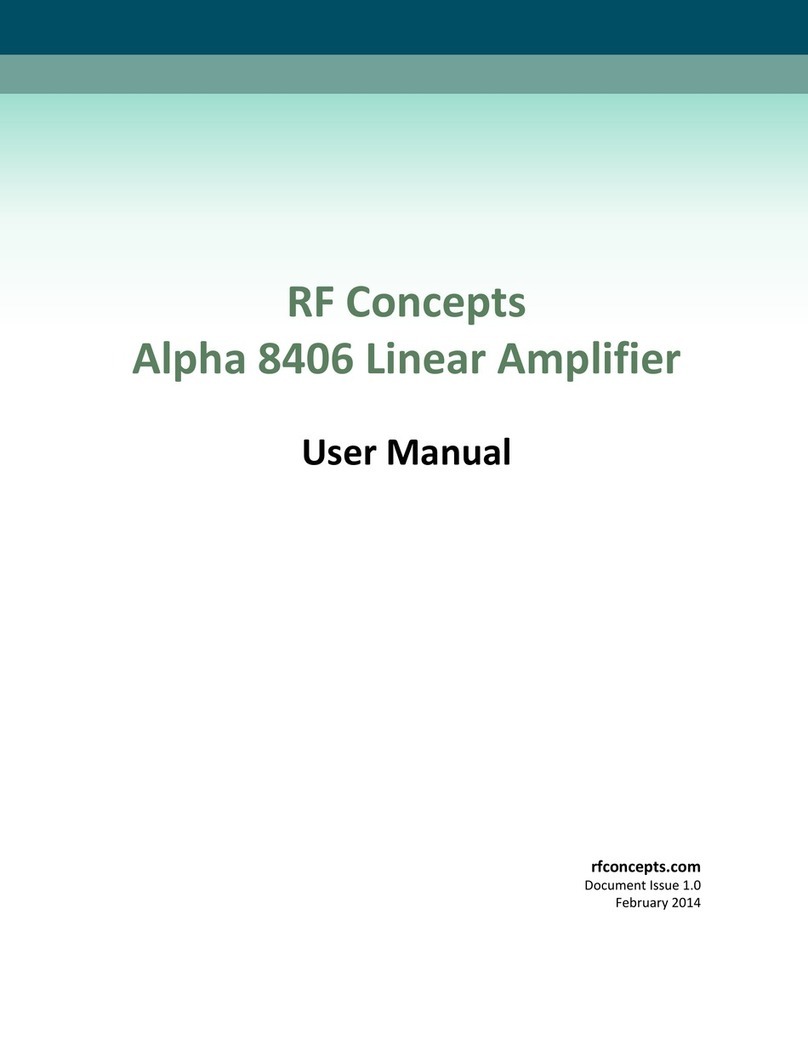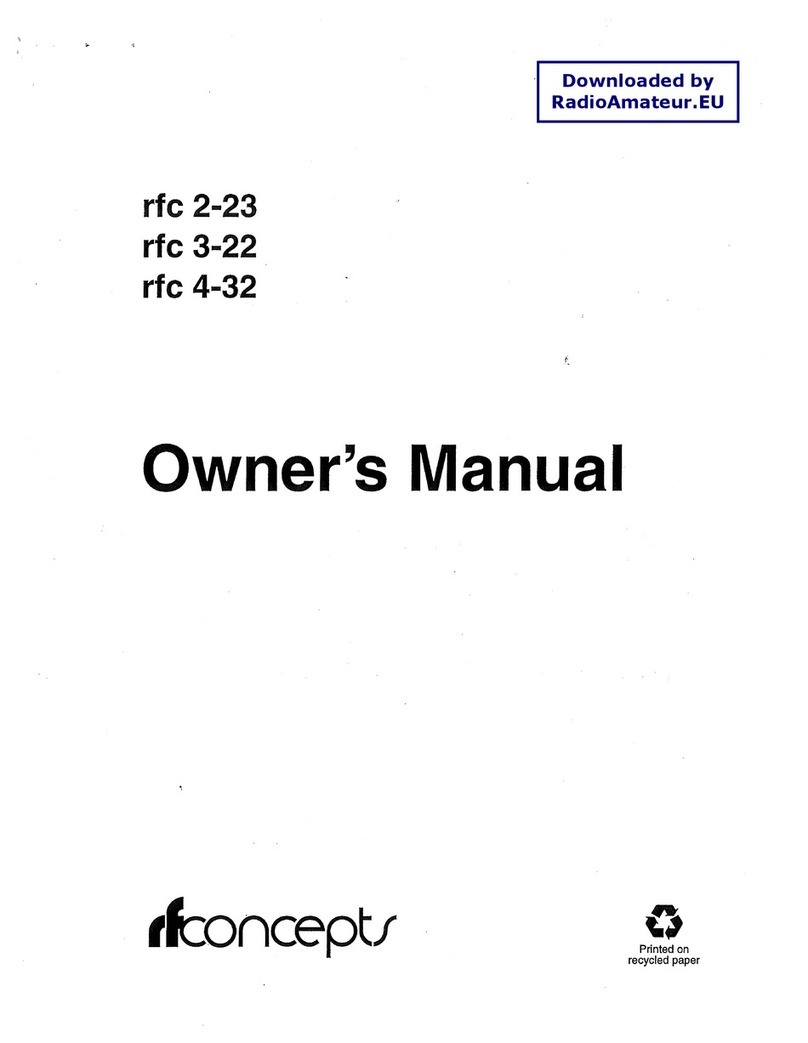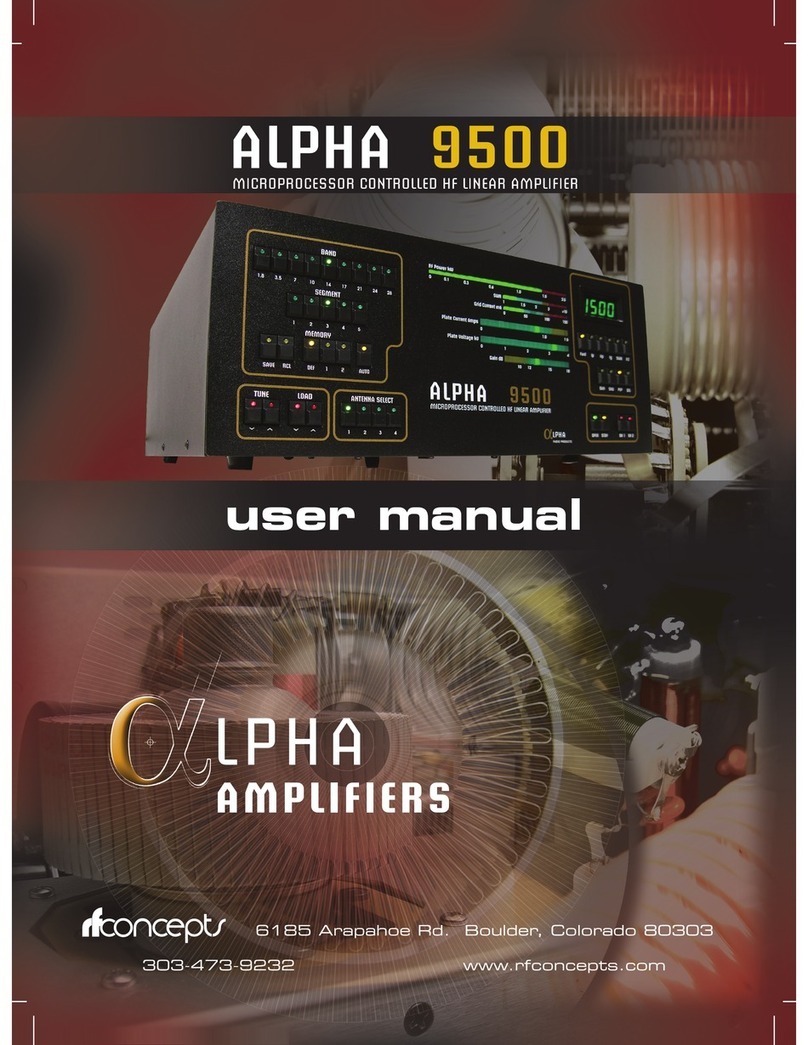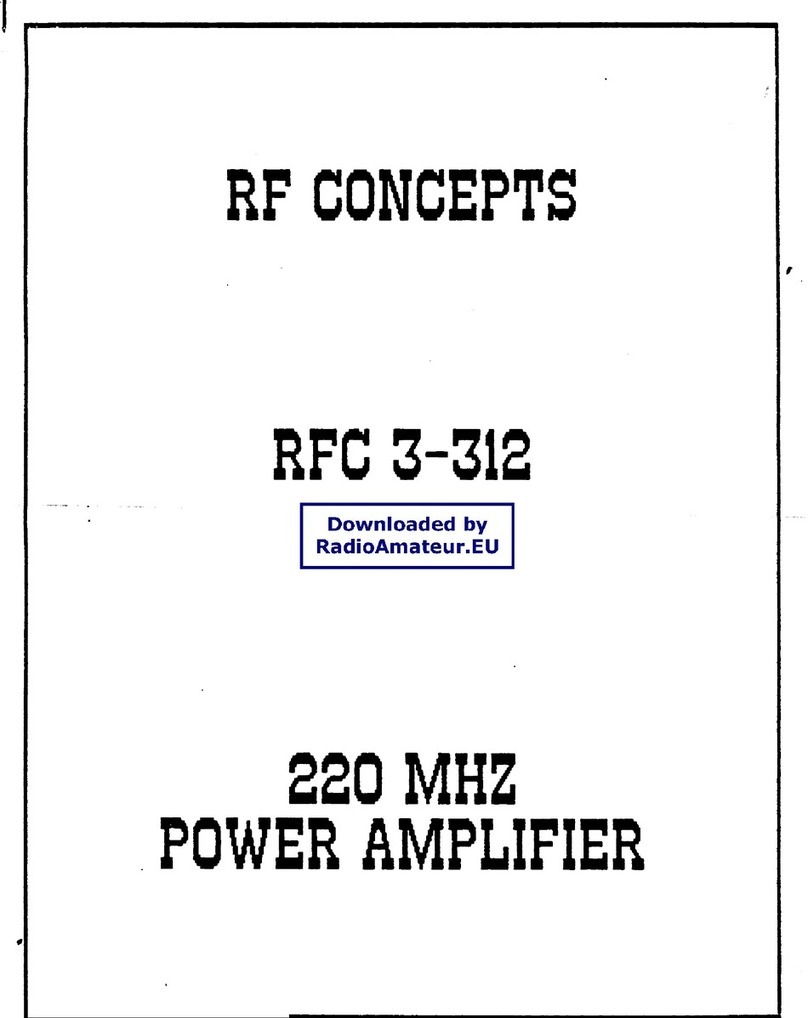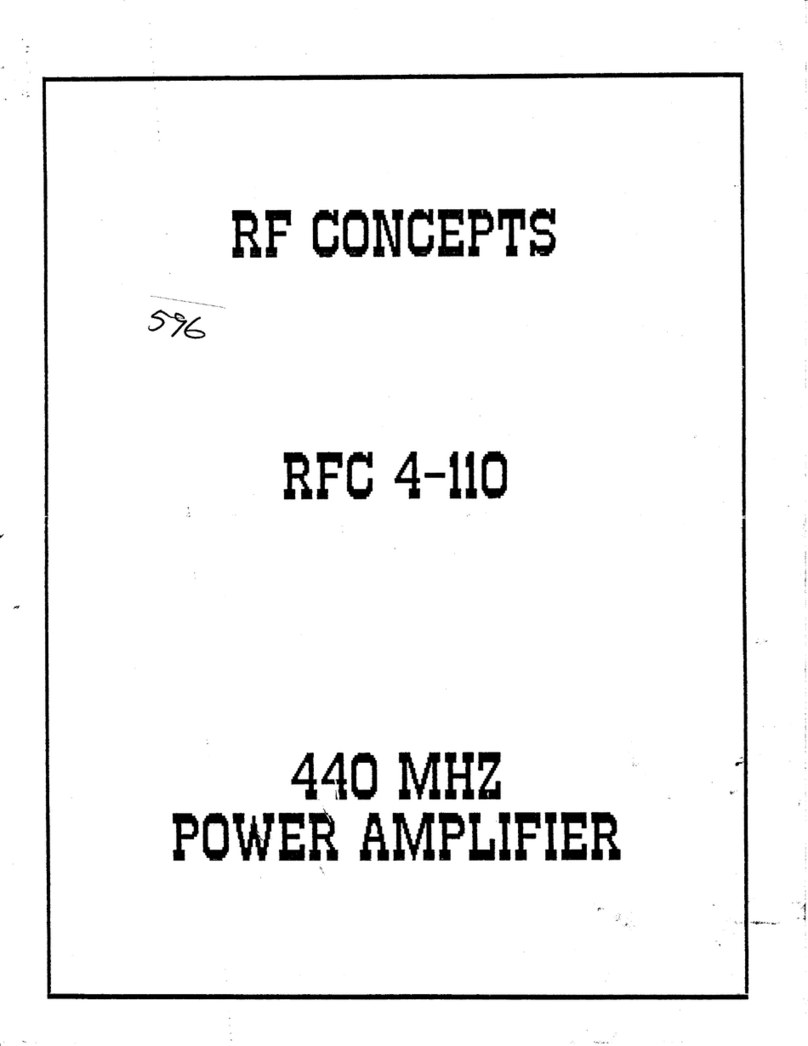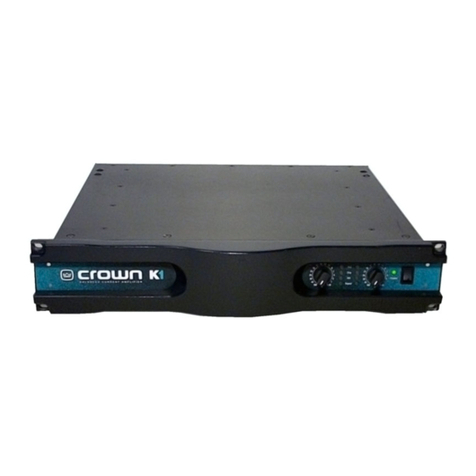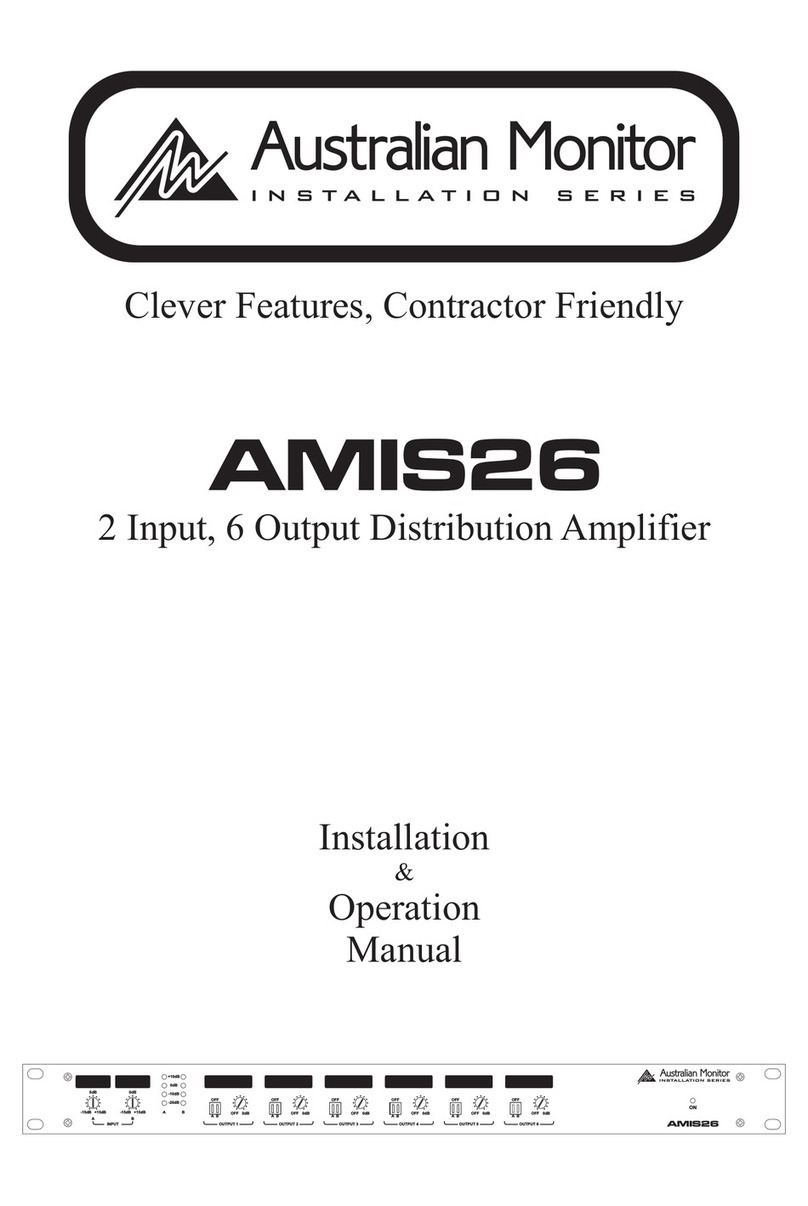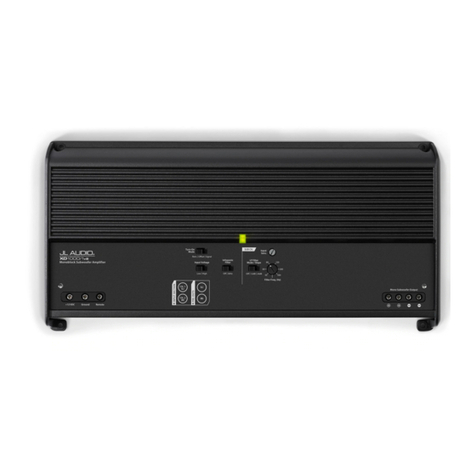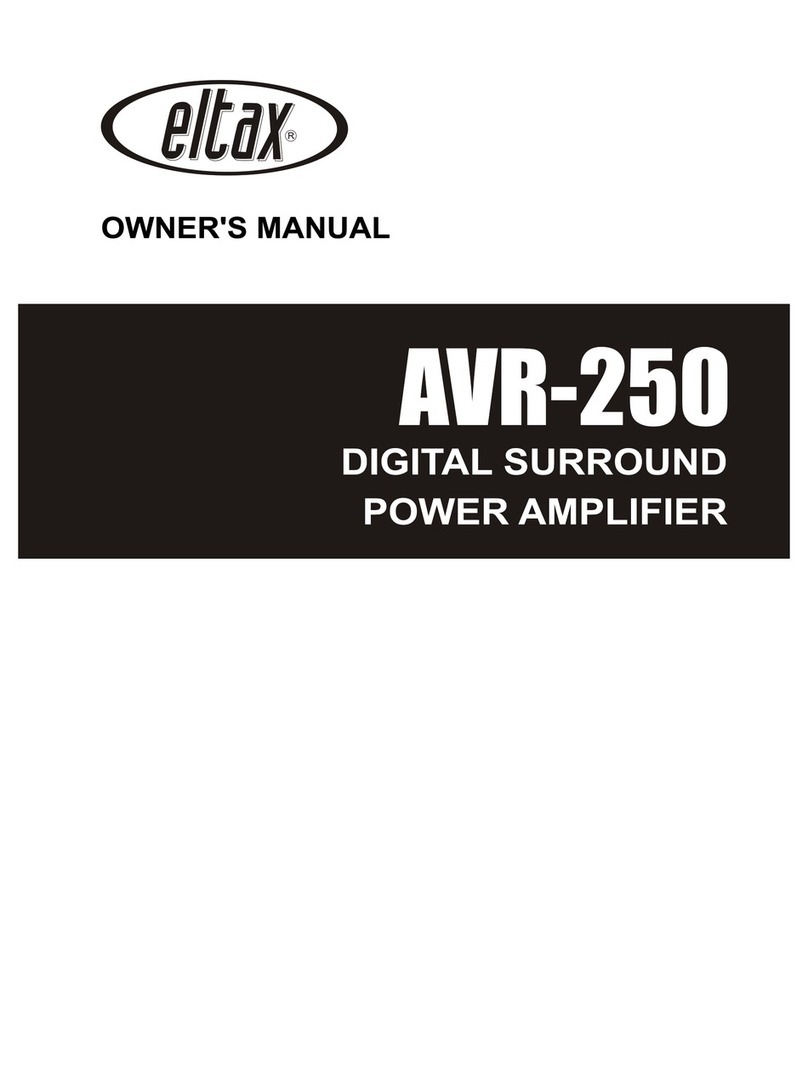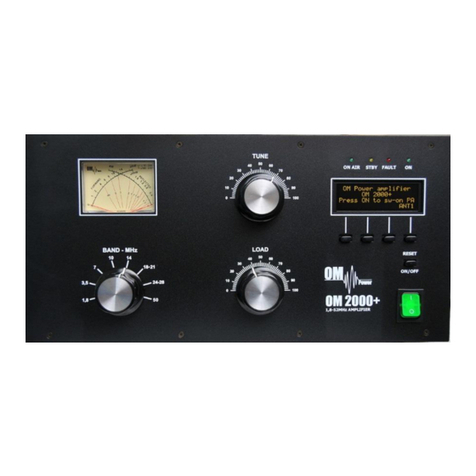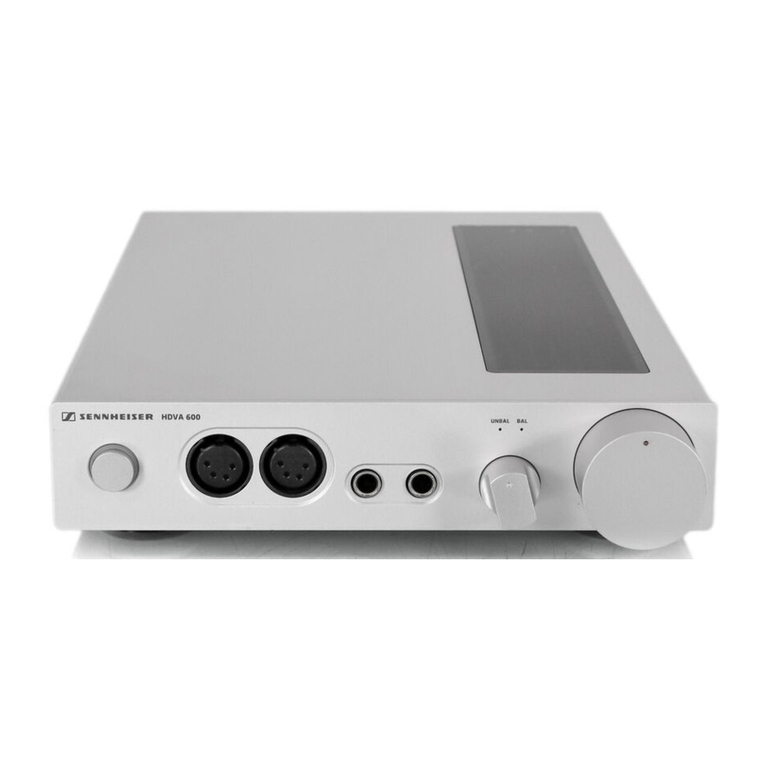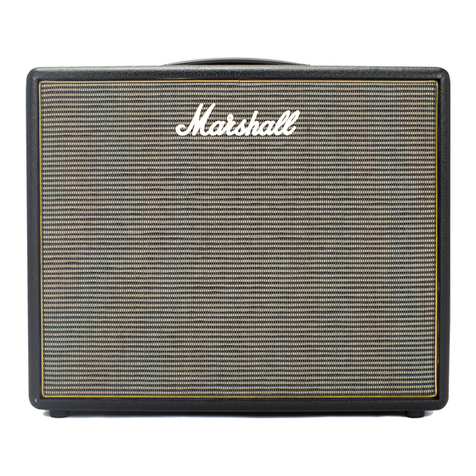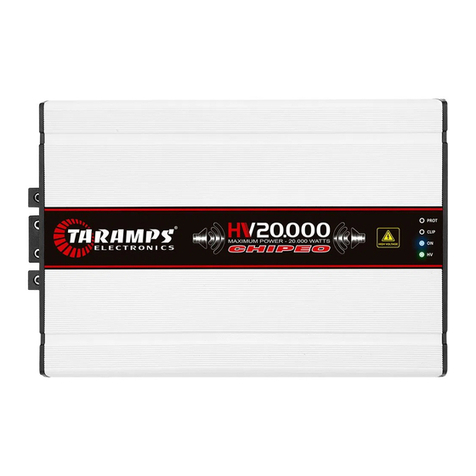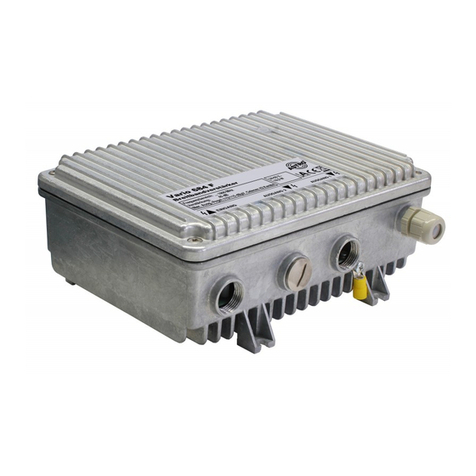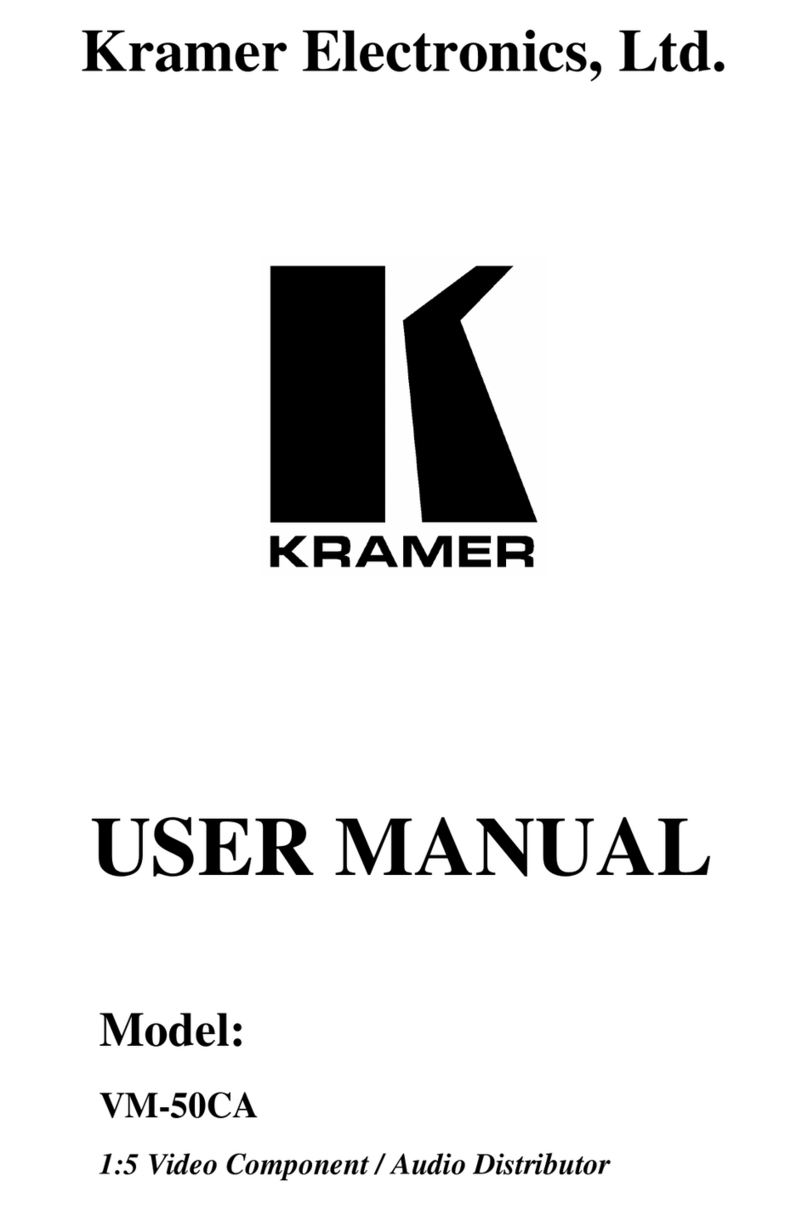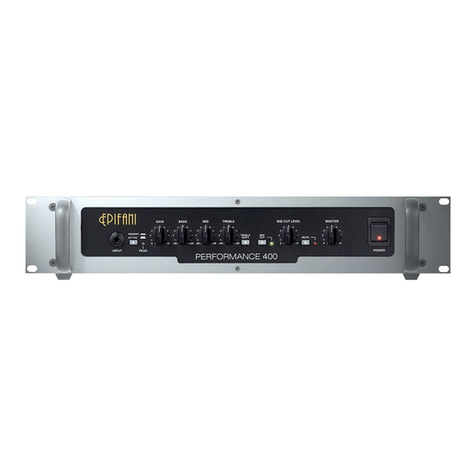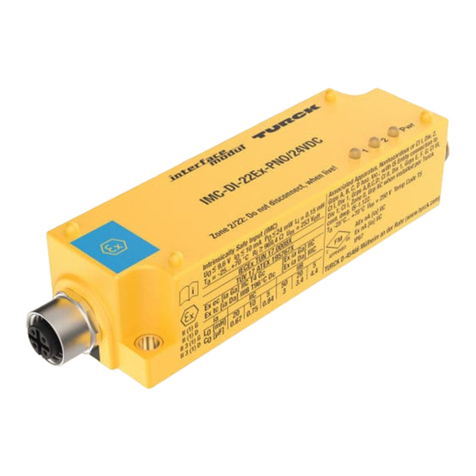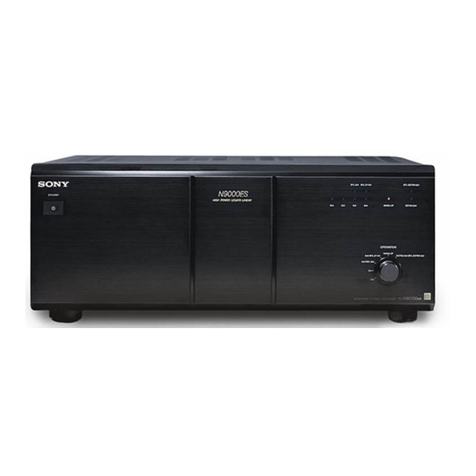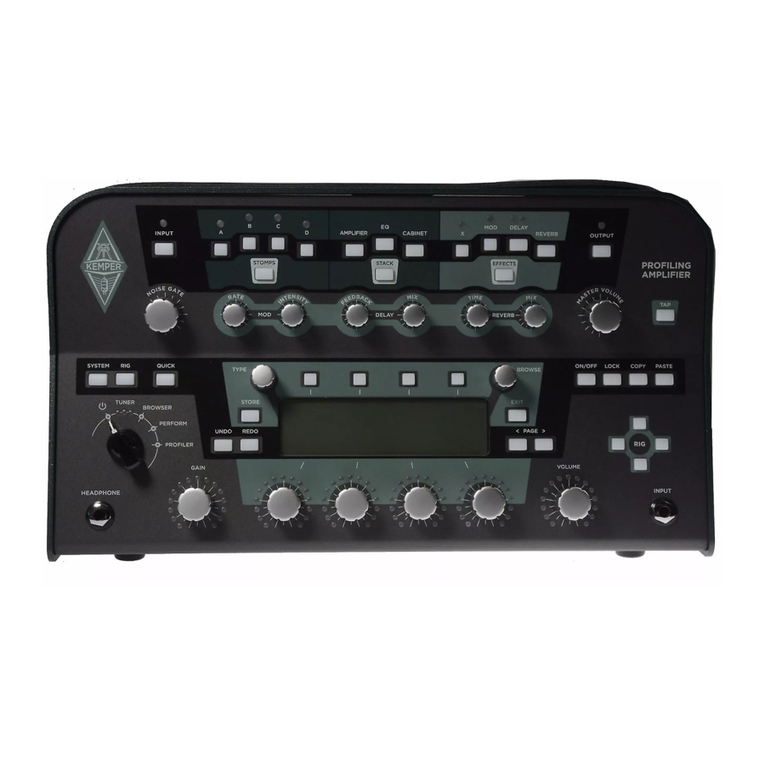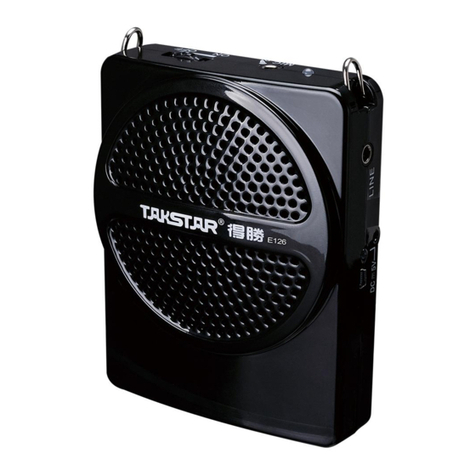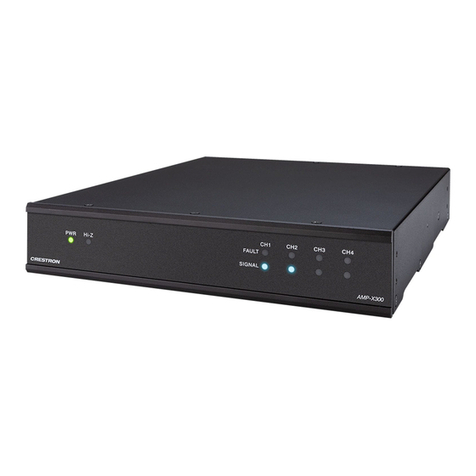RF Concepts Alpha 8406 User manual

1
Preliminary
ALPHA 8406
6 Meter
VHF LINEAR AMPLIFIER
OPERATING MANUAL
© 2010 RF Concepts, Inc
634 S Sunset St
Longmont, Colorado 80501
Phone 303 4739232
All rights reserved
Specifications subject to change without notice - Rev. 1.2
December, 2010

2
Index
Specifications 3
Introduction 5
Quick Start Information 9
Station Engineering Considerations 11
Unpacking and Preparation 19
Theory of Operation 27
Operations and Maintenance 31
Trouble Shooting Hints 41
Glossary 45

3
Specifications 8406 6 Meter Amplifier
Frequency 50-54 MHz
Input drive Level 50 Watts Nominal
Power Output 1500 watts
SWR Tolerance 3:1
Duty Cycle 100 %
Tubes (4CX1500B)
Inter Modulation Level 34 dB minimum, Two Exciter
Harmonics -72 dBc
Mode of Operation CW, SSB, FM
Input AC Voltage 100-240 Selectable
AC Current <13 5mps @240 VAC @1500 watts
Input Impedance 50 Ohms
Output Impedance 50 Ohms
RF Connectors “N” Female
Cooling Forced Air
Size 17.3”W x 7”H x 21.0”D Including Fan Space
Weight 70 lbs., 31.8 kg
T/R Relay Vacuum QSK
Tuning Manual
Display Bargraph LED
Interface USB
Protection Against all common faults
RF Bypass Level Less than 200 watts
This amplifier meets or exceeds all technical specifications listed above.

4

5
1 Introduction
1.1 General Description
Congratulations on your purchase of a professional quality Alpha 8406 amplifier! With
proper installation and care, you can expect to enjoy your Amateur Radio hobby with this
amplifier improving your signal for many years to come. Please study this manual
carefully before operating your amplifier for the first time.
The Alpha 8406 is a self-contained manual tune VHF linear power amplifier capable of
continuous operation at 1500 W peak power output on SSB, keyed CW, SSTV, RTTY,
digital modes or FM, with no time limit.
See our web site at www.rfconcepts.com or call 303-473-9232 for further information.
1.2 Amplifier Capabilities
CAUTION:
It is extremely important to thoroughly review the Installation and
Operation sections of this manual before attempting to us the Alpha
8406. Failure to do so could result in serious damage that may not
be covered under warranty.
Continuous RF Output. The 8406 is capable of 1.5 kW continuous RF output on
all commonly used modes and on any authorized amateur frequency from 50-54
MHz
Compatibility with popular amateur transceivers and exciters. The 8406 requires
approximately 50-65 W peak RF drive for 1.5 kW output.
Capable of full CW break-in, QSK and all digital modes when used with any
appropriate transceiver.
Protective functions are built in. The control system incorporates protective
functions that minimize the probability of accidental damage to the amplifier or
its power tubes. In most cases, when one of the protective functions is “tripped,”
the amplifier will go to Standby.
1.3 Shipping Information
The Alpha 8406 amplifier ships in two heavy-duty double cardboard cartons. One carton

6
holds the power transformer and weighs 43 lb (20 kg) and the second carton contains the
amplifier and weighs 50 lb.(17 kg).
Alpha recommends that you retain the cartons after installation in the unlikely situation
that you need to ship the unit later. Contact RF Concepts at 303-473-9232 for shipping
advice and assistance.
1.4 Safety Information –Installation and Operation
Make sure the Alpha 8406 is located where there is good air circulation all around
and on top of the cabinet. The unit may become hot during operation.
The Alpha 8406 weighs approximately 70 pounds when the transformer is
installed. Use proper lifting techniques and two people when moving the
amplifier. Note that amplifier should NEVER be transported with the transformer
in place.
The Alpha 8406 is designed to meet international safety standards and FCC
regulations. However, one should always remember that the equipment works
with high voltages that can be LETHAL!
This operating manual holds information, cautions and warnings that must be
followed to ensure safe installation and operation. Read Chapter 1 before
attempting to unpack or operate the Alpha 8406 amplifier.
Warnings: What Not to Do
Never open the amplifier case without unplugging the unit from
the wall outlet.
Always resist the temptation to immediately hit the ON button after
the amplifier faults to power off.
Never touch an antenna during transmission.
Never attempt to turn on the amplifier without the cover
securely in place (all attachment screws reinserted).
Never turn the amplifier back on after a hard fault without
waiting at least 20 seconds.
Never allow liquids to enter the amplifier through the cover holes.
Never stick objects into holes in the case.
Warnings posted in this manual should be read and thoroughly
understood by users. Failure to perform procedures properly
may result in amplifier damage, fire hazard, or electric shock.
1.5 Owner Assistance
Technical Assistance from RF Concepts is available from several sources.

7
The RF Concepts web site is www.rfconcepts.com. Click on Support and
follow the instructions. Many typical problems and their solutions are listed
on this site. On this site you can get the following assistance:
Technical Support
Repair Information
Software Downloads
Manuals
Tech Tips
Legacy Equipment Information
FAQ’s
Alpha Forum
You can email us for customer support by filling in the support request at
www.rfconcepts.com or you can send your request by fax to 303-473-9660, or
call us at 303-473-9232

8

9
2 Quick Start Information
2.1 Overview
This section explains in brief the items you need to consider when setting up your
Alpha 8406 amplifier.
If you already have a well-designed shack and have used an amplifier before, please
review the items below to make sure you have considered all the critical items for
proper installation and operation.
If you are using an amplifier for the first time, please skip this section and go to sections
3, 4, and 5 for a more detailed explanation of how to set up your shack for maximum
safety and operating enjoyment.
If you have installation questions, do not hesitate to contact Customer Support. We
much prefer to address questions prior to power up.
2.2 Station Engineering Considerations - Checklist
Make sure you have properly addressed the following concerns (Section 2.3 below)
before installation of your Alpha 8406 amplifier. If you are unsure of any of these
items, please read the noted sections carefully.
2.3 Preparation
__ 240V AC Power in shack? (Section 3.2)
__ Amplifier placed with proper airflow? (Section 3.3)
__ Antenna ready for 1,500W? (Section 3.4)
__ Adequate RF cabling? (Section 3.5)
__ RF Exposure Safety (Section 3.6)
2.4 Unpacking

10
__ Unit Checked for Damage?
__ Transformer Installed? (Section 4.2.1, 4.2.2)
__ Power Cord Connector Attached? (Section 4.2.3)
__ AC Primary Voltage Set? (Section 4.3.6)
___Amplifier Grounded Properly? (Section 4.4.1)
__ Amplifier Cover Replaced and Secured? (Section 4.3.6)
2.5 Operation
__ All Exciter Interconnections Set? (Section 6.2)
__ Exciter Drive Correctly Set? (Section 6.1.1)
__ Amplifier Tuned to Antenna System? (Section 6.3.6)

11
3 Station Engineering Considerations
3.1 Overview
The Alpha 8406 is capable of dramatically improving the performance of your amateur
station. It is important that you observe good engineering practices to achieve all the
benefits of such a station in a safe and reliable manner. This section provides a few
hints for important operational considerations, but it is recommended that the user also
consult a good source of general information such as “The Radio Amateur’s
Handbook” by the ARRL, especially if this is the first high-power amplifier you have
used.
3.2 AC Power Source
This amplifier runs best when powered by a 200V - 240V AC circuit. If you do not have
a 240V AC outlet in your shack, you will need to get a licensed electrical contractor to
install one. A minimum of a 20 amp capacity is required. A 20 amp breaker on your
240V circuit is sufficient. There are many styles of plugs, some of which are country-
specific. For this reason, the amplifier is not shipped with a power plug. Select a
location for the outlet as close as possible to where you expect to operate the 8406. If
you are not sure, or contemplate moving the amplifier, you may choose to get a second
outlet installed at the same time. Ask your contractor for two or three matching plugs
during installation as there are several styles of connector available. Ask the contractor
to measure the voltage and record it, so you can set the line voltage tap on the 8406
appropriately. If possible, have the contractor measure the line voltage with a 10 amp
current draw, and use this value for setting the transformer tap. The Alpha 8406 can run
when connected to a 120V AC outlet. However, you WILL NOT achieve full legal limit
output in this case. If the amplifier is connected to a 120V AC outlet, you should not
expect more than 1000 W output.
3.3 Air Flow

12
It is critical that airflow around the Alpha 8406 remain unimpeded at all times.
Keep the top of the amplifier clear of any restrictions. If you are mounting the
amplifier in a console, make sure that the exhaust air is properly and fully
removed from the console.
Figure 3.3 -Minimum clearance for proper airflow
Keep top tube exhaust clear
Keep rear intake clear
Poorly designed consoles can result in outlet air being drawn back into the amplifier air
intake and recirculated, thus getting hotter and hotter and resulting in degraded amplifier
performance or even failure. If you are designing your own console, consider putting in
additional fans and/or ducting to deal with waste heat. Try to minimize the possibility of
dust or other contamination getting drawn into or falling on the amplifier. It is also
advisable to periodically (at least annually) clean the dust out of your amplifier for
continued flawless operation. RF Concepts recommends the use of compressed air for
dust removal.
Too ensure adequate
cooling, make sure the top
and rear of your amplifier
have at least 3” of clearance
to allow unobstructed
airflow.
Make sure the exhausted air
cannot be recirculated back
into the amplifier air intake.

13
3.4 Antennas
Many antennas that are suitable for general use are unsuited for operation with a full
1500 W of power. At this power level in a 50-ohm circuit, the RMS current is 5.5 amps
and the peak RF voltage is 387 volts. With a 2:1 SWR, these values double to 11 amps
and 775 volts. The actual voltage and current at various points in or on your antenna may
actually be many times these values. On a simple dipole with sharp wire ends, corona
(localized ionization) can easily occur. Corona can (and has!) led to fire in nearby
objects. Traps in beams and verticals can heat up significantly during high power
operation. Instances of melting or flashover of traps have occurred in many installations
where insufficient thought has been given to their ratings. If an antenna has been
deployed for a long period of time, it may be worth taking it down for inspection prior to
full power operation.
3.5 Coax and Connectors
The importance of a well-constructed feed-line system cannot be overstated. After all, the
purpose of the amplifier is to provide approximately 2 S units (12+ dB) of improvement
in your radiated signal. All too often, installation problems are encountered where cheap,
poor or under-rated coax and connectors are used. These often are responsible for at least
one S unit of degradation. (This means you could have bought a 375 W amplifier and
achieved the same radiated signal by buying good quality feed-line components!) Use
the lowest loss 50-ohm coaxial cable you can obtain. Use new, clean connectors installed
according to the manufacturer’s recommendation. Clean the connectors after soldering
them, and before mating them with the amplifier. Make sure any excess solder is
removed from the connector; likewise remove any fragments of braid etc. Never use old
coax, which may have had moisture penetrate under the jacket. Support the coax
frequently using non-compressive clips so that it does not hang or stretch under its own
weight. Avoid sharp or kinked bends (most manufacturers will specify a minimum bend
radius for their product). Make sure the connection from feed-line to antenna is
waterproof. Provide for disconnection of the feed-line when it is not in use; this protects
against damage caused by power surges and lightning strikes, which are not covered
under the amplifier warranty.
3.6 RF Safety

14
The FCC requires users to check their installations for compliance with published values
for allowable exposure to RF fields. This information is available in ARRL publications,
FCC printed rules, and on the web. RF Concepts strongly recommends that this be done
for any installation, both fixed and at an expedition or contest site.
If you have any questions regarding engineering your 8406 into your amateur radio
station, please visit our online technical support website at:
www.rfconcepts.com
The below calculations are taken with the RF Exposure calculator located at
http://hintlink.com/power_density.php. Three representative calculations are presented
below. Two safe distances are represented. The first is a controlled area. A controlled
area, is where a person knows the radiation levels and exactly how long they can be in the
area before having to leave the area for a specific period of time.
The second is an uncontrolled area. An uncontrolled area is generally where pedestrians
may not know they are in an exposure area and as a result this area the radiation levels
must be below a point where a person may remain
indefinitely.
¼ Wave Vertical Antenna

15
Interpretation of Results
1. The power value entered into these calculations should be the average power
seen at the antenna and not Peak Envelope Power (PEP). You should also
consider feedline loss in calculating your average power at the antenna.
2. If you wish to estimate the power density at a point below the main lobe of a
directional antenna, and if the antenna's vertical pattern is known, recalculate
using the antenna's gain in the relevant direction.
3. Please also consult FCC OET Bulletin 65 Supplement B, the Amateur Radio
supplement to FCC OET Bulletin 65. It contains a thorough discussion of the RF
Safety regulations as they apply to amateur stations and contains numerous charts,
tables, worksheets and other data to help determine station compliance.
The above calculation is for a vertical ground plane antenna at 20 feet elevation feed
with a short piece of coax with the station located just below the antenna. Minimum
safe distance is represented in Red. The antenna is located at ten feet above ground.
6 Element Beam at 100 Feet
Cal
cul
ati
on
Re
sul
ts
Av
era
ge
Po
we
r
at
the
An
ten
na
150
0
wa
tts
An
ten
na
Ga
in
in
dB
i
2
dBi
Dis
tan
ce
to
the
Ar
ea
of
Int
ere
st
100
feet
30.
48
met
ers
Fre
qu

16
The above calculation represents a 1400 watt RF signal feed into a 6 element yagi
located 100 feet above the ground. As a result the down ward lobe 100 feet from the
base of the tower is at a 45 degree angle. The RF measured is out of the main lobe
and as a result the antenna has a negative 10 dB of gain over the normal 12 dBi gain
if the person was standing in the main pattern lobe.
Av
era
ge
Po
we
r
at
the
An
ten
na
140
0
wat
ts
An
ten
na
Ga
in
in
dB
i
-10
dBi
Dis
tan
ce
to
the
Ar
ea
of
Int
ere
st
100
feet
30.
48
met
ers
Fre
qu
enc
y
of
Op
era
tio
n
50

17
3 Element Beam at 35 feet
The above calculation represents a four element beam at 35 feet above the ground feed
with 1400 watts of power. At 100 feet most of the pattern gain is still over the person
standing at 100 feet.
Average Power at the Antenna
1400 watts
Antenna Gain in dBi
5 dBi
Distance to the Area of Interest
100 feet
30.48 metres
Frequency of Operation
50 MHz
Are Ground Reflections Calculated?
Yes
Estimated RF Power Density
0.0613 mW/cm2
Controlled
Environment
Uncontrolled
Environment
Maximum Permissible
Exposure (MPE)
1.005
mW/cm2
0.205
mW/cm2
Distance to Compliance
From Centre of Antenna
24.7994 feet
7.5589 meters
55.3913 feet
16.8833
meters
Does the Area of Interest
Appear to be in
Compliance?
yes
yes

18

19
4 Unpacking & Preparation
4.1 Unpacking
Inspect both boxes for physical damage. Save all packing material for possible future
use. Contact 303-473-9232 if shipping damage is found. Carefully unpack the amplifier
and transformer.
Carefully remove the amplifier and place it on a workbench or table where you can install
the power transformer.
4.2 Installing the Power Transformer
It is recommended that the power transformer be installed when the amp is at or near the
place it is to be used. The chassis of the 8406 is designed for the mechanical loads it
experiences when the amplifier is on a flat surface with the tilt-bail up or down. If the
amplifier is tilted too far, such that the transformer is cantilevered or “hanging out” to any
degree, the chassis of the amplifier can distort. If the amplifier is moved, even if only
from one site to another locally, remove the transformer to avoid the possibility of
damage.
CAUTION:
Do not operate amplifier without the cover in place and all cover screws
installed. Do not operate the amplifier without a good ground connection
on the rear panel ground terminal.
Make sure all RF cables have a solid ground shield in place.
WARNING!
The transformer is very heavy and must be moved with due caution using
only the lifting handle.
CAUTION:
PROCEED SLOWLY to avoid bumping and damaging adjacent wires,
connectors or components.
While the top cover is removed, make the tube is firmly seated in its socket, rubber
exhaust chimney is fully and correctly installed, and anode connector is tightly clamped

20
to the tube. The silicone rubber chimney installed on the 4CX1500B tube is a critical part
of the cooling system. Make sure the chimney is straight and fully installed so the
bottom of the chimney is firmly against the tube deck and completely covers the airflow
openings in the deck. Make sure that the silicone rubber chimney is flush with the top
cover when it is placed back on the amplifier. Tube cooling exhaust must exit only
through the tube anode fins; it must not be allowed to escape outside them. Failure to
ensure proper cooling airflow may result in tube damage or destruction, which is not
covered under warranty.
4.2.2 Connecting the Transformer Power Plugs
Connect the 9-pin white Molex connector to the matching plug mounted on the
back wall of the amplifier
Connect the 8-pin orange connector to the matching pins on the upper (Mains)
PCB.
Connect the 6-pin yellow connector to the matching pins on the lower (HV) PCB
Check to ensure that all connector pins on these three connectors engage fully and
correctly.
4.2.3 Power Cord Connections
WARNING!
To avoid the hazard of a potentially fatal electric shock and/or
severe damage to the ALPHA 8406 and other equipment, always use
an AC plug that is appropriate for the primary mains voltage, current
rating and configuration.
NEVER use 120V-type plugs and power receptacles for 190-250V
circuits.
ALWAYS use grounding type AC connectors which conform to local codes and
ensure that the green wire in the Alpha 8406 power cable is wired only to the AC
mains safety ground (or to neutral, as may be necessary with a 240V circuit
configured 120V-N-120V without a separate ground, commonly found in the US).
The green conductor in the power cord is wired to the ALPHA 8406 chassis. It MUST be
connected only to the power source safety ground or neutral. The black and white power
cord wires connect to the two “hot” wires of the AC source; either wire may be connected
to either side of the line. For best results use a dedicated 200-240 V branch circuit of #10
AWG copper wire or equivalent, rated at 20 A, to feed the amplifier.
4.2.4 Important Information about Operation from 90-130V AC
Other manuals for Alpha 8406
1
Table of contents
Other RF Concepts Amplifier manuals
